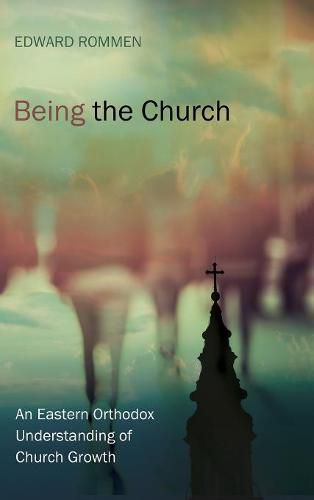Readings Newsletter
Become a Readings Member to make your shopping experience even easier.
Sign in or sign up for free!
You’re not far away from qualifying for FREE standard shipping within Australia
You’ve qualified for FREE standard shipping within Australia
The cart is loading…






This title is printed to order. This book may have been self-published. If so, we cannot guarantee the quality of the content. In the main most books will have gone through the editing process however some may not. We therefore suggest that you be aware of this before ordering this book. If in doubt check either the author or publisher’s details as we are unable to accept any returns unless they are faulty. Please contact us if you have any questions.
If the divine liturgy really is as beautiful as we claim, wouldn’t more people attend? Wouldn’t the church grow? Driven by our desire for growth, we count, we analyze, we make charts, and we strategize, but often with few discernible results. That is probably the result of focusing on secondary aspects of church life. As we know, the very existence of a church is a gift of God’s presence and not the result of any particular actions taken by human beings. For that reason, church is primarily about being something rather than doing or achieving something. So the growth of the church is not reflected in ever-increasing numbers, dollars, and activities, but rather in steadily growing conformity to the divine ideal. So in order to evaluate ecclesial growth, we will first have to ask what the church is supposed to be. One answer to that question is captured in the four marks of the church given in the creed: Oneness, Holiness, Catholicity, and Apostolicity. These four characteristics serve as a matrix or framework within which we can focus on the primary aspects of ecclesial being and help it grow and become what it was intended to be.
$9.00 standard shipping within Australia
FREE standard shipping within Australia for orders over $100.00
Express & International shipping calculated at checkout
This title is printed to order. This book may have been self-published. If so, we cannot guarantee the quality of the content. In the main most books will have gone through the editing process however some may not. We therefore suggest that you be aware of this before ordering this book. If in doubt check either the author or publisher’s details as we are unable to accept any returns unless they are faulty. Please contact us if you have any questions.
If the divine liturgy really is as beautiful as we claim, wouldn’t more people attend? Wouldn’t the church grow? Driven by our desire for growth, we count, we analyze, we make charts, and we strategize, but often with few discernible results. That is probably the result of focusing on secondary aspects of church life. As we know, the very existence of a church is a gift of God’s presence and not the result of any particular actions taken by human beings. For that reason, church is primarily about being something rather than doing or achieving something. So the growth of the church is not reflected in ever-increasing numbers, dollars, and activities, but rather in steadily growing conformity to the divine ideal. So in order to evaluate ecclesial growth, we will first have to ask what the church is supposed to be. One answer to that question is captured in the four marks of the church given in the creed: Oneness, Holiness, Catholicity, and Apostolicity. These four characteristics serve as a matrix or framework within which we can focus on the primary aspects of ecclesial being and help it grow and become what it was intended to be.